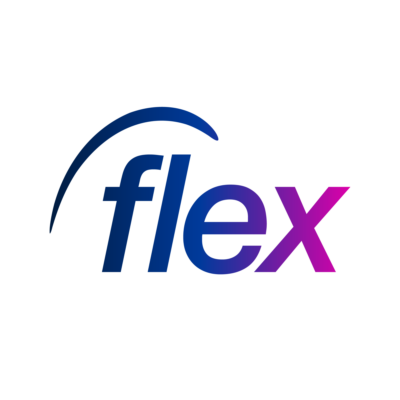
Shift-based workforces are critical to industries like logistics, retail, and hospitality. With evolving labour market demands, businesses must adapt by leveraging AI, data-driven strategies, and advanced technologies to improve agility, quality, and efficiency. These innovations also bring significant benefits to HR, Procurement, and Operations teams, empowering them to meet challenges head-on and drive impactful results.
AI-powered workforce management
Artificial intelligence is transforming workforce management by enhancing decision-making and operational efficiency.
- Smarter shift allocation: AI matches workers to roles based on skills, availability, and performance, improving workforce utilisation and reducing errors.
- Predictive analytics: AI-powered forecasts allow teams to plan for seasonal peaks and surges, ensuring readiness without overstaffing.
- AI interviews: Automated interviews accelerate hiring by up to 40%, ensuring consistency and reducing time-to-fill.
- Real-time insights for faster decisions: AI provides dynamic insights, enabling HR, Procurement, and Operations leaders to make informed decisions quickly, improving agility and accuracy.
Benefits:
- HR teams: Accelerate hiring processes and improve candidate quality.
- Procurement teams: Gain better control over vendor selection and spend optimisation.
- Operations teams: Ensure the right workers are in place to meet fluctuating demand efficiently.
Employee experience and engagement
A focus on worker experience is critical for retaining shift-based teams and reducing turnover.
- Flexible scheduling: Self-scheduling tools give workers control over their shifts, improving satisfaction and reducing absenteeism.
- Real-time feedback and recognition: Engagement tools provide instant feedback and recognition, enhancing motivation and alignment with business goals.
- Wellbeing initiatives: Offering mental health resources and ergonomic shift designs reduces burnout and increases worker loyalty.
Benefits:
- HR teams: Retain top talent and reduce recruitment costs through better engagement strategies.
- Procurement teams: Ensure access to a consistent and motivated talent pool from agencies.
- Operations teams: Minimise disruptions caused by absenteeism or low worker satisfaction.
Insight: Companies focusing on engagement experience 25% lower turnover rates, leading to significant cost savings.
Workforce agility and on-demand talent
Flexibility is essential for managing demand fluctuations and seasonal peaks.
- Pre-vetted talent pools: Accessing pre-qualified workers ensures rapid response to staffing needs, reducing time-to-hire by 35%.
- Blended workforce models: Combining full-time, part-time, and contingent workers allows businesses to scale staffing levels efficiently.
Benefits:
- HR teams: Easily fill gaps with quality talent during surges.
- Procurement teams: Leverage high-performing talent from trusted vendors without overpaying.
- Operations teams: Maintain operational consistency, even during periods of high demand.
Subscribe to our newsletter
Stay ahead of employment updates and workforce management tips. Subscribe to our newsletter for expert insights straight to your inbox.
Technology-driven solutions
Technology underpins modern workforce management, driving efficiency and empowering teams.
- AI-powered scheduling: Predictive tools optimise shift planning, balancing availability with demand and reducing absenteeism by 20%.
- Mobile-first platforms: Workers can manage schedules, swap shifts, and clock in via mobile apps, improving ease of use.
- Real-time dashboards: Dynamic dashboards provide live updates on key metrics like shift fulfilment, costs, and performance.
Benefits:
- HR teams: Gain real-time visibility into workforce performance to make data-driven decisions.
- Procurement teams: Track vendor compliance and performance with ease.
- Operations teams: Use live updates to proactively address staffing challenges.
Vendor Management Systems (VMS)
A centralised VMS simplifies vendor relationships, offering visibility and control across the entire supply chain.
- Consolidated vendor management: Centralise agency contracts, invoicing, and performance data into one platform.
- Automated workflows: Streamline compliance, shift allocation, and reporting to save time and improve accuracy.
- Performance insights: Evaluate vendor effectiveness in real time to optimise agency usage.
Benefits:
- HR teams: Focus on strategic talent acquisition rather than manual processes.
- Procurement teams: Reduce costs by identifying high-performing vendors and renegotiating terms.
- Operations teams: Quickly access reliable talent during critical moments.
Data Insight: Organisations using VMS technology report a 20–40% reduction in agency spend.
Data-driven decision-making
Data analytics enables proactive and precise workforce planning.
- Predictive workforce planning: By forecasting staffing needs, businesses can avoid overstaffing or under-resourcing.
- Real-time metrics: Track labour costs, shift fulfilment rates, and compliance in real time.
- Compliance automation: Ensure alignment with regulations through automated workflows, minimising legal risks.
Benefits:
- HR teams: Use data to refine recruitment and engagement strategies.
- Procurement teams: Monitor spend and compliance for better vendor management.
- Operations teams: Plan shifts more effectively and maintain operational readiness.
The future of workforce management lies in AI, technology, and data-driven strategies. These innovations not only improve agility and workforce quality but also empower HR, Procurement, and Operations teams to achieve their goals more efficiently.
By adopting AI-powered tools, centralised VMS platforms, and real-time analytics, businesses can transform shift-based workforce management into a competitive advantage.
Are you ready to future-proof your workforce strategy? Start transforming operations today – take a peek at what we can offer.
Book a demo
Discover a staffing solution tailored to suit your business requirements








